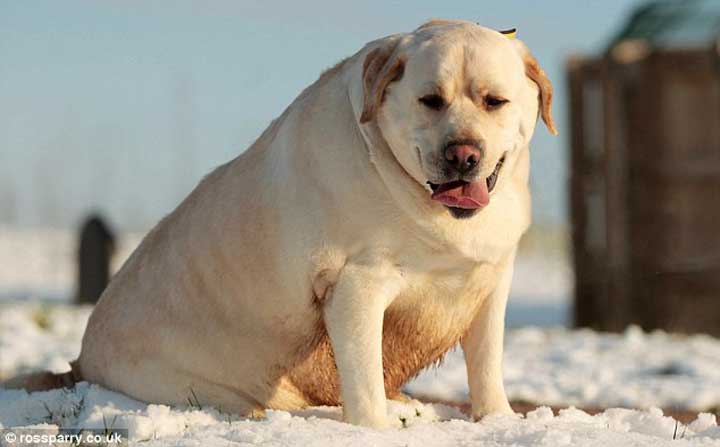Health
Your Labrador Is Extra Vulnerable To Obesity: Here’s What You Can Do To Help
Just like obesity is on the rise among humans, pet dogs too are more likely to be obese. Similar to humans, more and more dogs are obese because of their lifestyles; they eat too much of the wrong foods and get insufficient exercise.
One breed of dog that is most vulnerable to obesity is the Labrador, a popular pet worldwide. Both because of their never-ending love for food as well as a slow metabolism, Labradors tend to store more fat than other large breed dogs. For this reason, Labradors are more at risk of health complications that arise thanks to obesity.
Obesity and Health Concerns
An obese Labrador becomes more vulnerable to similar problems as obese humans – primarily heart issues. Additionally, obesity increases your pet’s risk of liver disease, joint inflammation, arthritis, respiratory diseases and skeletal problems such as hip dysplasia.

An obese Labrador also tends to have lower immune functions and therefore becomes vulnerable to catching airborne diseases like colds and coughs.
What Can You Do?
First off, consult with your vet to decide whether your lab is obese or not. The vet will take under account age, exercise patterns as well as check for other health issues that may be contributing to the obesity.
Then, your vet will work with you to come up with an adequate diet plan. Here are some diet suggestions that many vets agree on:
Feed Only Once Or Twice A Day
Many dog owners tend to leave dry dog food or biscuits down for their dogs all day, assuming they can snack on them while hungry. When it comes to Labs, this is a bad idea; they’re always hungry and will eat food as soon as you put it down.

Therefore, instead of feeding it an unlimited diet, feed your dog twice a day with regulated amounts.
Feed Him A Low Calorie Diet
Instead of maintaining your Labrador on a store bought diet, start feeding him home cooked food; that way you can be sure of the amount of fat going into each meal.

A low calorie diet for dogs includes meals that are high on proteins (choose chicken and eggs over red meat) and low on carbohydrates (gradually cut down on rice, bread and other whole grains you give your dog).
Encourage Him To Drink More Water, Or Add Stock To His Meals
Add chicken or vegetable stock to your dogs’ meals. Not only will it add nutritional value to them, but it will also fill up his tummy, which will make him feel full.

Getting him to drink more fluids will decrease the likelihood of your dog begging for food once you start him on the diet. However, the chances are that for the time it takes to get accustomed to it, your Lab will be looking at you mournfully while you eat and spend long periods of time gazing at his feeding bowl.
If you’ve consulted with your vet about the correct amount to feed him each day and are doing just that, don’t give in to those adorable looks! He’ll get used to his diet and feel more energetic and healthy over the course of time. Remember to pair the diet with exercise for a happy, healthy Lab.




















